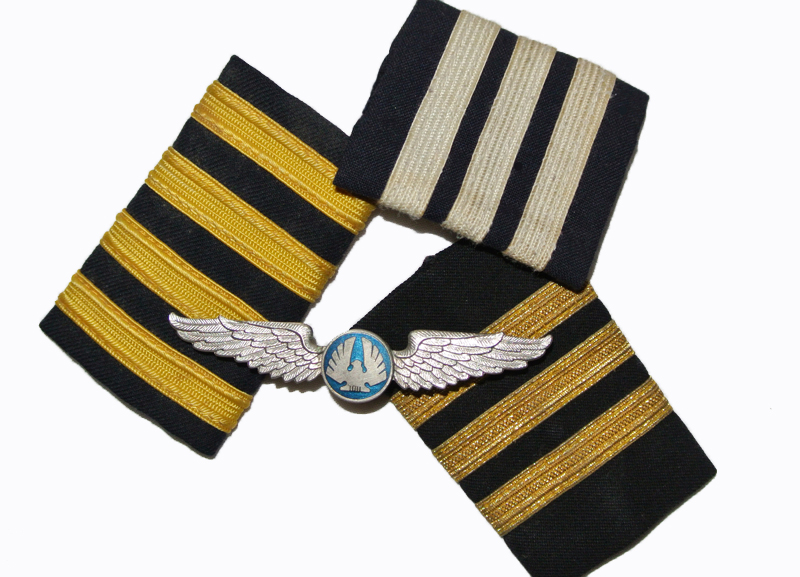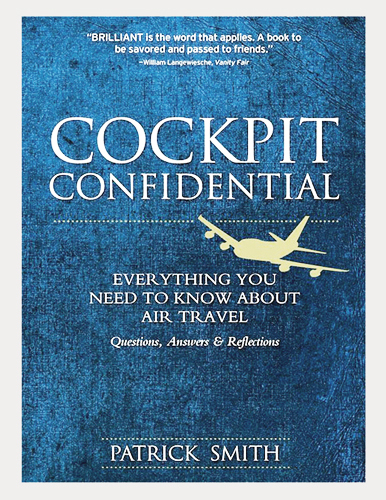Attention Media: Copilots are Pilots
UPDATE: February 4, 2015
I don’t know what caused the TransAsia Airways ATR turboprop to crash earlier today — an accident caught spectacularly and horrifically on video. Early reports suggest an engine failure that was improperly handled by the crew. Whatever the cause, it’s clear that CNN didn’t read my original blog post, below. The emails I sent them on this topic also went unheeded.
In the network’s coverage of the TransAsia accident, reporters Euwan McKirdy and Vivian Kam wrote: “The plane’s pilot and two co-pilots were among those confirmed dead, authorities said.”
On and on it goes. This wouldn’t be bothering so much if I hadn’t just been complaining about it only a few days ago:
ORIGINAL POST: January 30, 2015
I CAN’T TAKE IT ANYMORE. How many times can the media, whether it’s a print reporter or a celebrity newscaster, make the same mistake? And why aren’t the supposed experts, often right there on camera with these people, putting them straight?
What I’m talking about is the characterization of the copilot. This has been a topic du jour since earlier this week, when it was revealed that the copilot of AirAsia flight 8501 had been at the controls when the Airbus A320 was lost, and then on Thursday when the captain of a Delta flight was locked out of the cockpit, requiring the copilot to land the plane in Las Vegas.
Good god, a copilot at the controls! The media apparently has no idea this is perfectly normal.
“Is that a problem?” CNN’s Anderson Cooper asked expert Dave Soucie the other night, in a discussion of the AirAsia crash. Soucie’s half-baked answer did nothing to sway the accepted notion that a copilot is something less than a “real” pilot and thus not entitled to actually fly an airplane.
I’ve harped on this before. It’s in my book. I wrote about it numerous times in my columns at Salon, and in earlier posts on this site. That nobody is getting the message is a testament either to my own lack of reach or to stubbornness on the part of journalists. Maybe it’s both. Either way, allow me to cut and paste:
Dear Anderson, et al:
There are always at least two pilots in a jetliner cockpit — a captain and first officer — and both of these individuals are fully qualified to operate the aircraft.
The first officer is known colloquially as the copilot. But a copilot is not an apprentice. He or she shares flying duties with the captain more or less equally. The captain is officially in charge, and earns a larger paycheck to accompany that responsibility, but both individuals fly the aircraft. Copilots perform just as many takeoffs and landings as captains do, in pretty much all weather conditions, and both are part of the decision-making process.
In fact, while protocols might be slightly different carrier to carrier, it’s not unusual during emergencies or other abnormal situations for the captain to delegate hands-on flying duties to the copilot, so that the captain can concentrate on communications, troubleshooting, coordinating the checklists, etc.
Do I seem sensitive about this? That’s because I’m a copilot.
And a copilot becomes a captain not by virtue of skill or experience, but rather when his or her seniority standing allows it. And not every copilot wants to become a captain right away. Airline seniority bidding is a complicated thing, and a pilot can often have a more comfortable quality of life — salary, aircraft assignment, schedule and choice of destinations — as a senior copilot than as a junior captain. Thus, at a given airline, there are plenty of copilots who are older and more experienced than many captains.
Now, in some areas of the world, including parts of Asia, the experience disparity between captains and copilots tends to be more pronounced, and the typical new-hire copilot has considerably less experience than his counterpart would in America. The captain of AirAsia 8501 had ten times as many flight hours as the first officer, who even after working for three years at AirAsia had logged less than 2,500 hours total. In America that would be unheard of; the average new-hire at a major airline has around 6,000 hours and often many more. In the AirAsia copilot’s defense, the raw totals in one’s logbook are only part of the story and aren’t necessarily representative of skill or talent. Airline training is never easy, and any pilot, no matter his or her background, needs to be good to succeed at that level. Still, it’s not surprising for people to wonder why such a comparatively inexperienced person would have been flying the plane during violent weather. Maybe, when this is all said and done, the correct question isn’t “Why was the copilot flying the plane?,” but rather “Why are such low-time pilots in these cockpits to begin with?” That’s a different conversation altogether. And it remains to be seen if either pilot’s actions had anything to do with the accident.
It can vary country to country, but captains usually wear four stripes on their sleeves and epaulets, and copilots wear three.
On older planes there was a third cockpit station occupied by the second officer, also known as the flight engineer. (I spent four years as a flight engineer on a cargo jet in the mid-1990s.) Once upon a time planes also carried navigators, but the last known navigator in these parts was the old Howard Borden character from the original “Bob Newhart Show.”
Long-haul flights carry augmented crews that work in shifts. There might be two copilots and a captain, two captains and a copilot, or two captains and two copilots. It varies airline to airline and with the length of flight. For example, at my airline, a ten-hour flight will carry three pilots: two copilots and a captain. Each crew member will have roughly one-third of the flight free. He or she retires to a bunk room or designated crew rest seat, while the other two remain up front.
In most conversations the term “co-” implies equal. With cockpits though, the presumption is of something less. I’m not sure exactly from where this stems. The cockpit cultures of years past probably have something to do with it. In the decades prior the advent of “cockpit resource management” and all that, the cockpit hierarchy was very rigid and the captain’s authority went unchallenged. Copilots were expected to be subservient and were seldom treated as equals by imperious captains. This culture has not entirely disappeared in some parts of the world.
Reporters’ frequent use of the term “the pilot” is another part of the problem. “The pilot” did this, “the pilot” said that. Well, which pilot exactly? Use of the singular implies that the other person in the cockpit is something other than, and presumably less than, an actual pilot. I’m not sure if reporters have a style guide for these things, but this is nothing a simple “s” can’t fix: “the pilots.” Alternately, one could say “the cockpit crew.” If a differentiation in rank is needed, I’d recommend using the terms “captain” and “first officer.” Just be aware that either pilot may be at the controls during a particular incident.
Epaulets photo by the author.
For more about pilot training, lifestyle and culture, see chapter four in the new book.





